Dimensional Design Theory
: Logic Proof
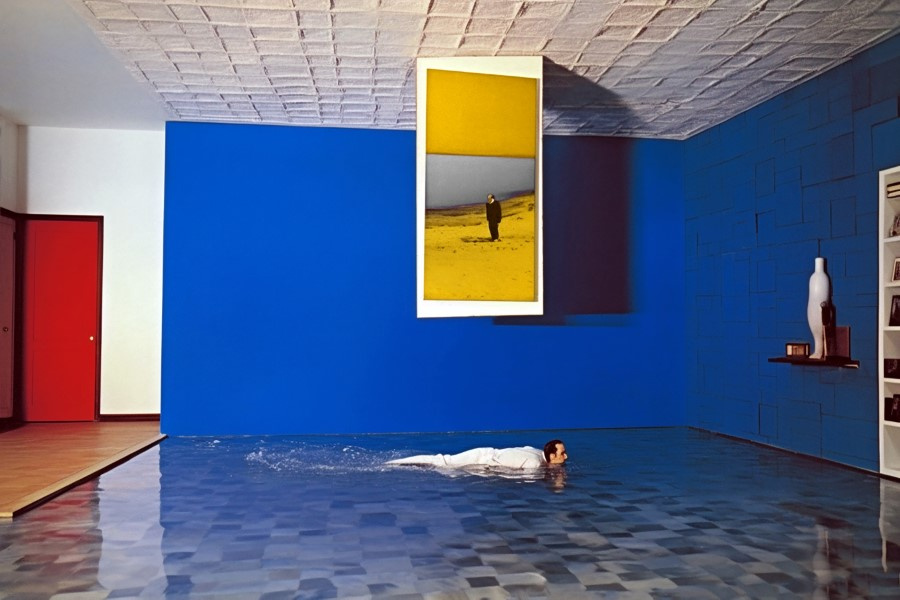
1. After spending some time in experimentally mixed space, I coined the term: {Imaginational Theory}. I used this {placeholder} to brainstorm on the topic of design thinking.
But to be more precise, I had to invent better words, posterior reformulated as: [Dimensional Design] 2
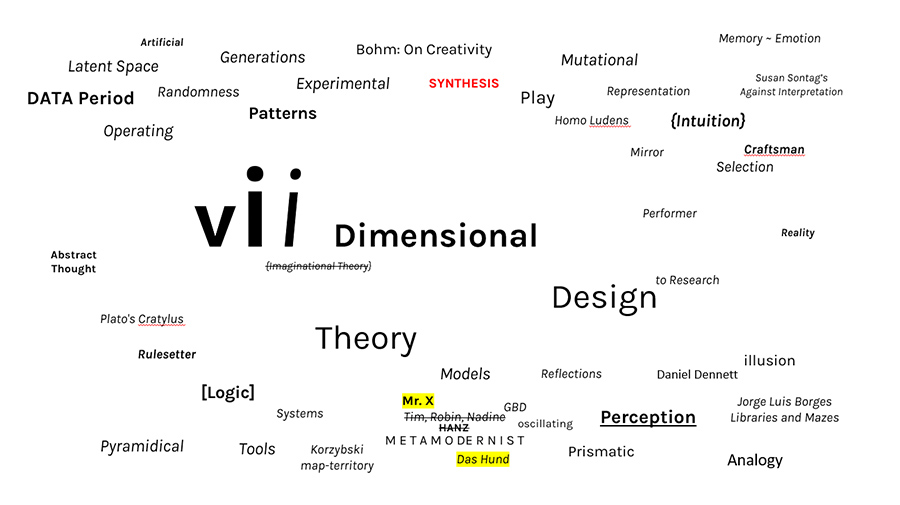
2. Even though I now knew how to make my own game, I was still moving around in my personal library of knowledge. By moving up and down different levels of knowledge: [known-knowns] perfectly arranged in alphabetical order @ level 2. The [known-unknowns], Leonardo's workshop in the basement level -2. Sometimes I could go deeper than level -2, traveling through unconscious memories to find [unknowns-knowns].
But I was still stuck behind the closed door of the garden-rooftop-terrace, where I might find something more extraordinary, the fourth missing category: [unknown-unknowns]
Word clue: Visit Zentralbibliothek Zurich (ZB) and you will understand what I mean.
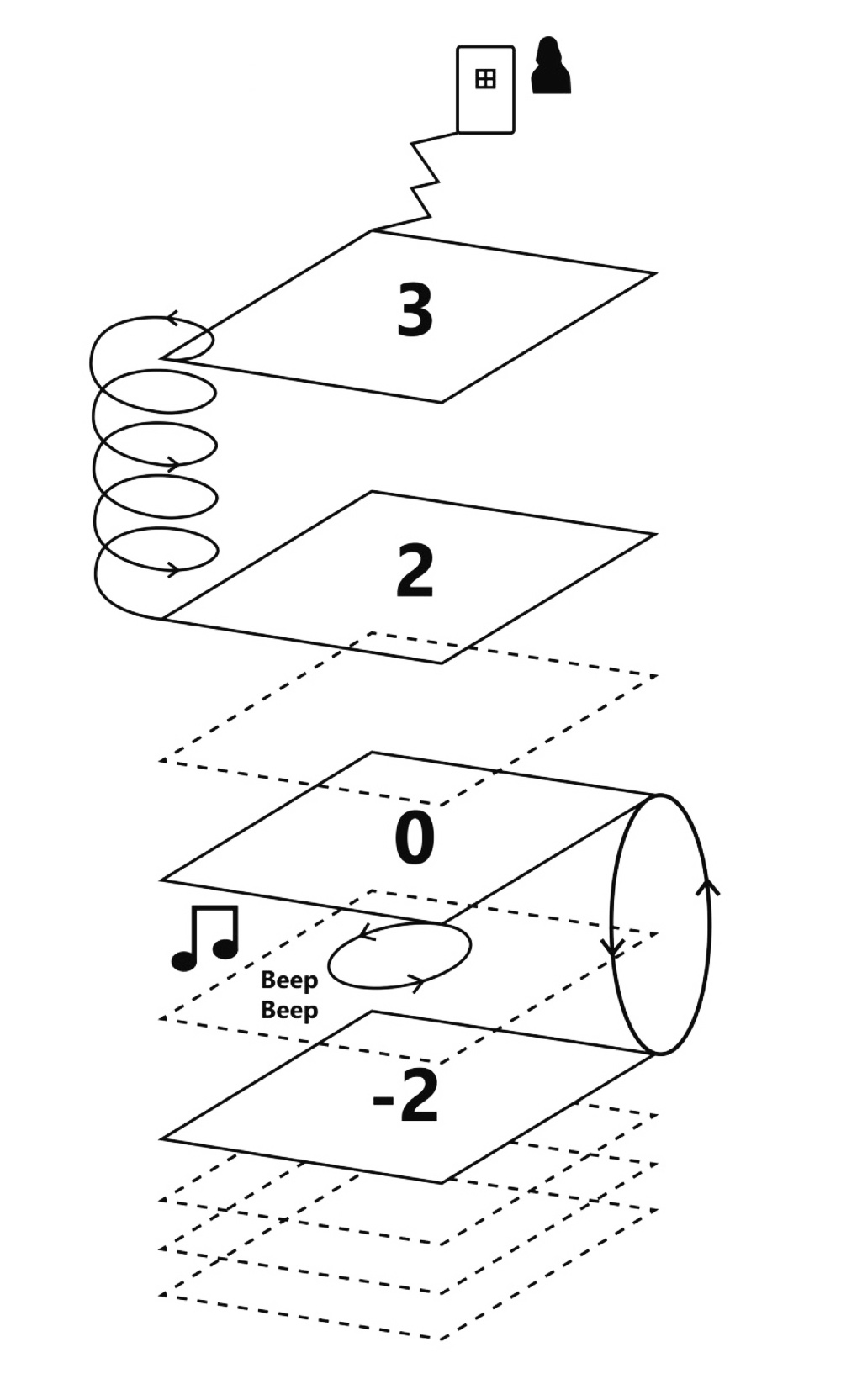

3. How can these patterns be reconstructed and synthesized in knowledge data? 4
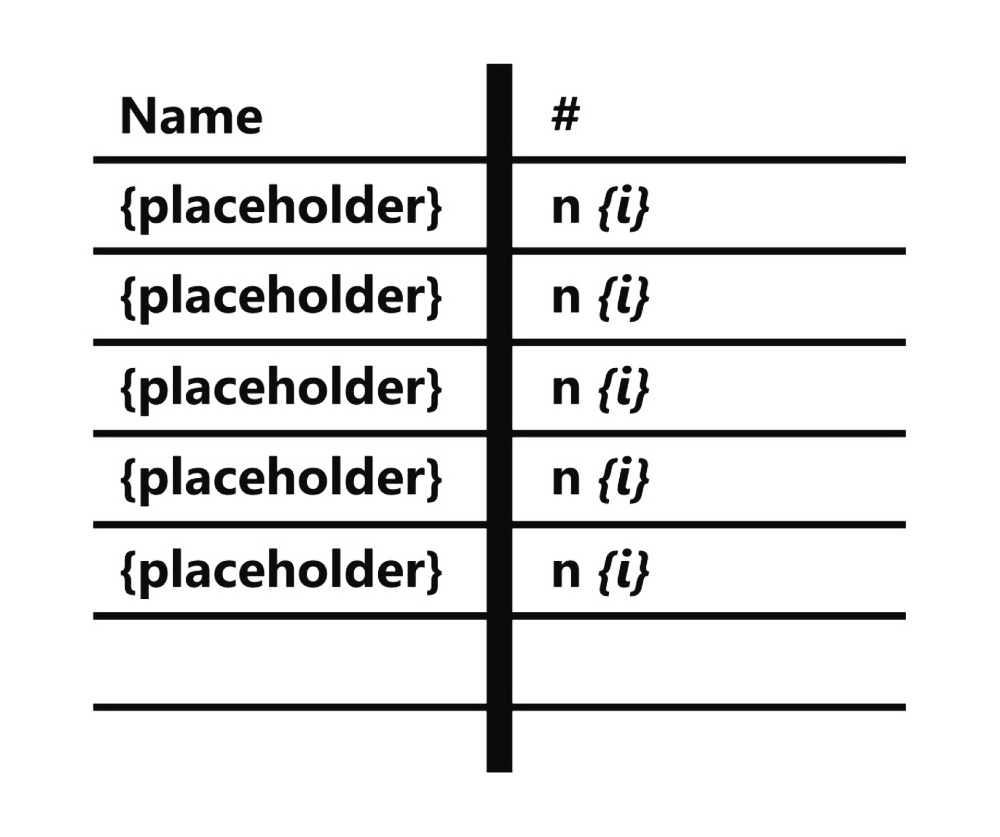
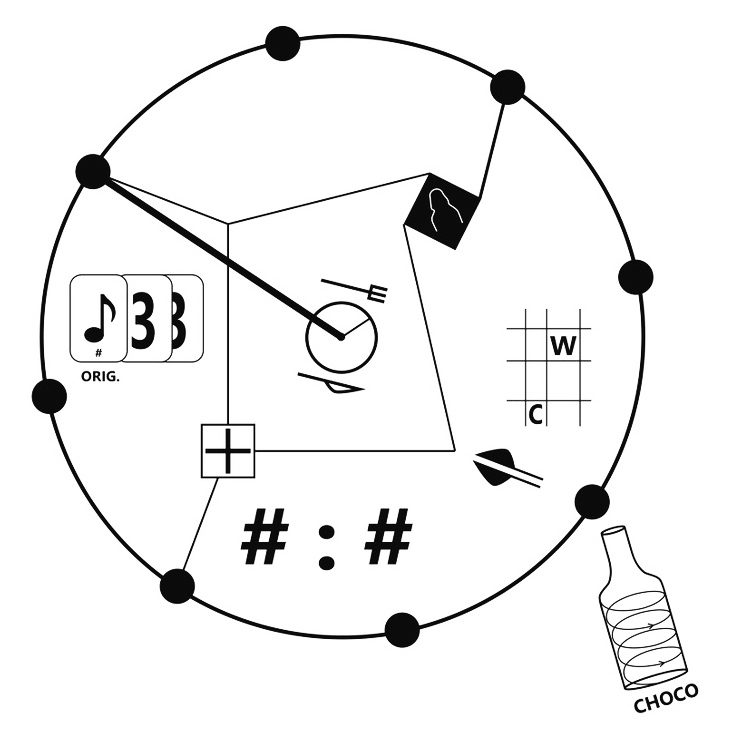
4. And finally construct a brand-new library of knowledge :
Japanese T-House5

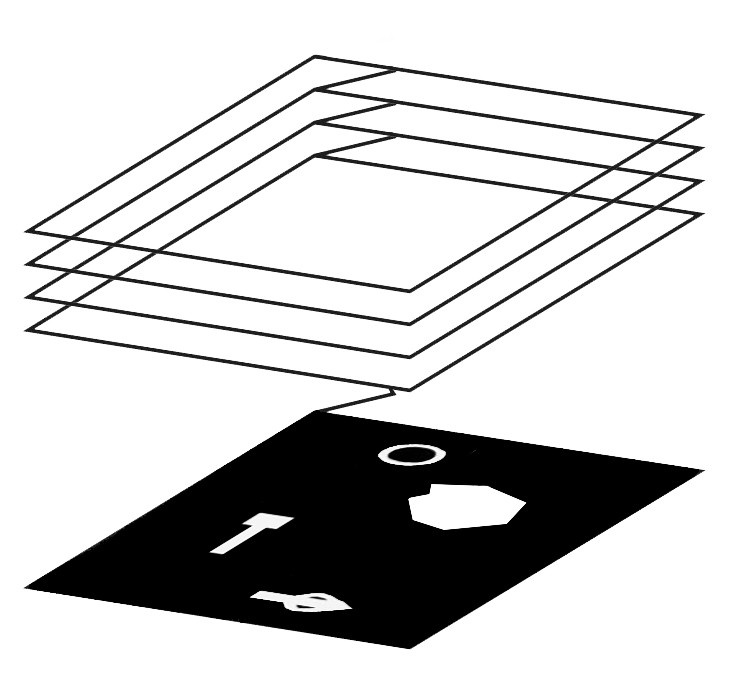
.
Jean Piaget [Constructivism]
i. Start out playing games
unconsciously in a sense and implicitly.
ii. Play games more consciously.
iii. Represent the games to some
degree, at least in your actions.
iv. Now you know how to play, learn
the explicit rules of the game.
v. Realize, you are not only a player
of games and a followers of rules,
but you are also producers of rules.
vi. You set the rules, so you can make new games {rule-setter}
vii. Play Dimensional Design [Heraclitus
argument]*
* Dualistic Tendencies in the Work of Theo van Doesburg, reformulated as Abstract : Reality [Language]
.
5. My guy Jean Piaget,
If you ever played chess, you know it is a finite game with finite moves on a stable raster of directions in space.
It might seem infinite at first, because there are so many games to play, but it is a raster with a finite number of squares with a finite number of pieces with a finite number of moves.*
*Dive deeper with the presentation Abstract : Reality [Chess]
The number of directions the game will move into is made even smaller, because there is a fixed place of departure. We learned computers to play chess, and for a long time now, the computer, a [logic-system], plays better than us.
First by brute-forcing the game through heavy calculations, nowadays surpassed by a light-weight algorithmic approach, aka Artificial Intelligence, the fancy term for {Machine learning}.
“Stalemate Jan.”
Being a Platonic {ruleSetter} to do design, just doesn’t cut it.
We as designers swim in an ever-moving-changing body of knowledge, starting from different points in space, moving on different planes of understanding, into different directions of formulation.
Yours Sincerely,
M.
6. Formulation of a Logical Proof
You do not make the game {Dimensional Design} because of external factors:
§ Power or fame
§ Making a beautifully made artefact
No! You do it because you want to build knowledge.
How to Swim in the Paradox of Design-Methodology
Traditionally understood methodology a [rule-set] becomes mechanical the moment you define the rules (III-rd Person). Design thinking is an intuitive approach by nature (Dialectic between 1st & 2nd Person). You can’t define the rules from the start, otherwise it becomes a [logic-system].
To understand its outcome; the design-artefact, we cannot scientifically isolate the process of analysis, and observe it from afar.
How to Think in Dimensions {levels of abstractions}, a synthesised analytical approach
Analyse the results of the observed data {design artefacts} from different angles (Cubist-lens) through a layered-cake of intellectual understanding.
:
Synthesised analysis to build knowledge, instead of a traditional quantitative analysis of the behaviour of datasets to make future predictions.
7. To explain this a bit, I must use my Mémoires, my 15+ year experienced life as an architect. Marcel Moonen, the architect is dead, even the abbreviation M. is all gone, we continue with mr. X.

Case Study V: Emperor without clothes
Drawing for the Hejduk House, Groning, John Hejduk {iii+1 Descriptions}
I Artist’s House in Groningen. Long narrow uplifted corridor, 3 rooms and the atelier as separate entities So there are moments, experiences when you move from one room to the other, dark, narrow, open wide, etc… But it’s also a philosophical idea about the working of time; inside the design of the house.
II Dimensional House of a model built into reality after his death. Blobby atelier in the back{creation}, long line{memory}, a concrete slab {now} and the future 3 rooms {eating, sleeping, living}
III Ducks house
IV †: Turn that noise down! Be silent! Only real art in this house.1
.
Cubist Lens:
- There is the mathematical description of the design-artefact.
- There is the meta-analysis, provided by John, my 1st year
architecture-professor.
- There is my friend. Who just calls it Ducks House, a referential description.
- “Whereof one cannot speak, thereof one must be silent”. TLP-Wittgenstein (German: Wovon man nicht sprechen kann, darüber muss man schweigen.)[The thread between Art and Design]
Mr.X :But how does this process work, how do these different levels of interpretation come together?
Synthesised analysis is the construction and deconstruction through a dialectical framework (as in Plato’s {Socrates} theirdialectics).
Later after writing these mémoires, I understood that it was not only dialectical, but also dimensional; because I describe a case-study of a design, a design-team I, myself, was part of.
But that is not me in the story, that is an invented character.
But I am also there sitting in front of my computer writing the text years later. And I am also writing the LP of it, and correcting it multiple times afterwards. Conducting reflections in 5 dimensions of recursing-thoughts.


8. As we all know design happens for a big part in collaboration. More imaginary characters join the stage. I try to imagine being those characters, embody their personality, and how they perceive and design-operate, even if I don’t like the person at all. Some strong characters start to represent their design ideas, and even become their designs [A Capital, Gestalt], they resonate their own [UMWELT]*
*Swapping, correcting and applying signifiers with GBD SKY: {agglomeration of various characters}

9. [Prismatic Thinking] While writing these Mémoires, in contemporary cultural abbreviated as such {Memes}, I started to understand that there are these patterns-narrative going on, through interference in various dimensions of understanding [the Code] : [~], or How Design Happens, as it has a life on its own.
Explanatory clause Σ: A priori given idea on a high complex plane can converge with another co-existing idea on a different, lower, or even higher plane of abstract thought. 8
10. And when more design ideas, on a variety of levels of abstraction, interfere they together crystallise into a beautiful multidimensional spatial form. 9
[Multidimensional Spatial Form] : Ideas at different levels of abstraction, have naturally connected into an apparent coherent embodied model, which is perceivable through its outcome, the design-artefact, observed through 1st person perspective, in concrete reality.

SA Volume 5th Dimension, Marcel Moonen (2020),
Banach ~ Tarski states that a 3D solid sphere can be decomposed into a finite number of pieces that can be rearranged—without stretching or distorting any of them—and reassembled into two spheres, each the same size as the original. From there, it follows that any 3D shape can be cut up and reassembled into any other 3D shape, irrespective of volume. They have an infinitely fine structure.
You could blow through the pieces of the spheres, as if they did not exist at all!
Super Abstraction, featured in
IT: CROSS THE DOOR OF IMAGINATION™ 9
Ⓜ
Author: Marcel Moonen, all rights reserved, this work cannot be reproduced (text+images) 09.09.23, Dimensional Design Theory : Logic Proof [EDUCATIONAL PURPOSE ONLY] Triple-A Society, M. Production